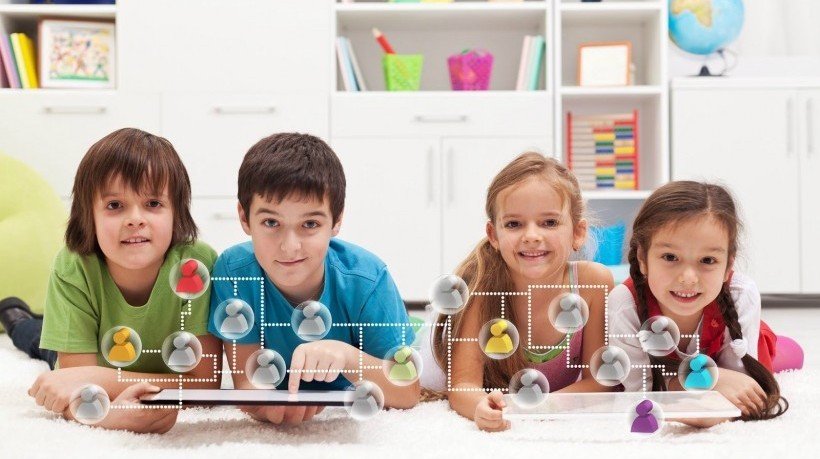How To Create Amazing Augmented Learning At Little Cost
Augmented learning is the process of taking real life objects, elements, and experiences and augmenting those using computer generated input. A QR code is one of the most basic and easy to explain examples of augmented reality that there is. The reality of, for example, a printed ad is enhanced when somebody scans the QR code. They might be shown a product demonstration video, or be taken to a website where they are allowed to access a game. Of course, augmented learning isn’t limited to business and technology. Teachers are now finding ways to use augmented learning technology to make lessons more engaging for their students, and to ensure that students are more likely to grasp the material. Here are 6 tools to create amazing augmented learning experiences in your classroom.
- Anatomy 4D.
This app, developed by DAQRI gives students the chance to explore the human anatomy in 4D. Rather than learning to identify the various parts of the human body in 3 dimensions from various angles so that they can understand the size and space relationships between the various organs and structures. Students can get started by downloading the app and then printing, emailing, one of the target images from the library that comes with the app. They can then use the app to turn each target image into a 4D model of various parts and systems within the human body. This is a great app for high school and college students. - Arloon Mental Math.
Mental math is just one of the several AR, educational apps that have been created by Arloon. Students can use Arloon mental math by using their devices to scan an AR card provided by the company. If the teacher wants to get the entire class involved, they can use a tablet based projector. In either case, the student is actively immersed in a 3-dimensional learning environment where they can work alone or with friends to solve math problems in an adventure based game. One of the benefits of this app is that it is also available for home use. This means that students who need to put in extra time, or who simply enjoy the games can continue the learning process at home. - Chromville Science.
This isn’t free. If you want the entire Chromville app, you will have to pay a subscription price. However, it is well worth the cost as it comes with 2-dimensional classroom materials, 3D printing materials, and an AR app that can be used in the classroom to truly make science learning come alive. This app was designed with multiple learning intelligence in mind, meaning that more students are likely to understand concepts after using this tool. This can even be used in a flipped classroom model where students read or watch online, instructional videos outside of class, then engage in AR related activities in the classroom. - Aurasma.
Of course, educators have more options than just relying on augmented reality apps created by third parties. They can use a free suite like Aurasma to create their own auras that can be set to trigger when an object is viewed using a smart device camera and the Aurasma app. Getting started is quick and easy, and the app even comes with a few free videos that can be used as the educator learns more about the app. The applications within the classroom are nearly limitless. For example, a teacher can film students discussing their opinions of a book they have just read, and then use the aurasma app to create an aura containing that video that is triggered when people view the cover of the book using the app. When this happens, the recorded video begins playing giving other students the opportunity to get insights about the book. A text book page could also be turned into a trigger image that plays a video of the teacher giving further instruction about a specific problem. - PBS Fetch! Lunch Rush.
This free app is PBS Kids’ first augmented reality app, and it’s available for free. Students can simply download the app to their mobile devices, then use the device’s camera, the app overlays graphics on top of the environment that the student already sees. This app is designed for kids between the ages of 6 and 8, and it uses augmented learning technology to create an engaging math learning experience. - NASA Spacecraft 3D.
If your students have access to smart devices with cameras, they can snap a picture of the free augmented learning target that you print out, which is provided by NASA. Once they have done this, they can then explore many of the space crafts that have been used to make new discoveries on mars, the moon, and elsewhere around the galaxy. Better yet, NASA is continually enhancing and updating this app so that students can continue to come back for more valuable, educational content.
Conclusion
Here’s the most exciting part. This article only scratches the surface. With a little time developed to personal education and a bit of online research, teachers can develop the skills and find even more resources. For minimal cost, any classroom can be turned into a virtual haven of augmented learning activities. Imagine an art class where students in an art classroom can scan a picture of a famous painting and then watch a video about the life of the artist who created it. How much more interesting would science class become if augmented reality technology could be used to bring to life three-dimensional models of cell structures? The possibilities are almost limitless, and it will become easier to use AR technology in the classroom as more students have access to mobile devices and wearable technology than ever.

